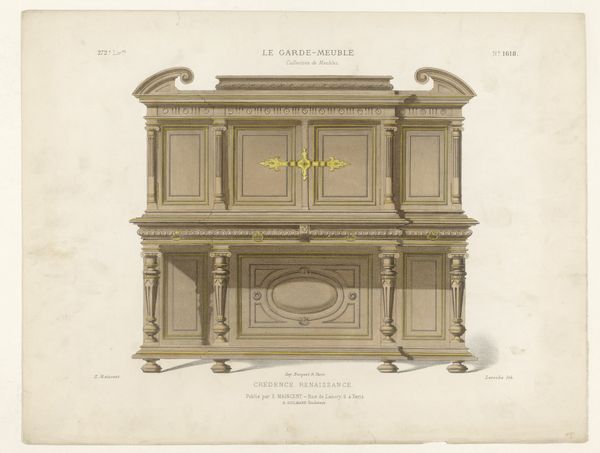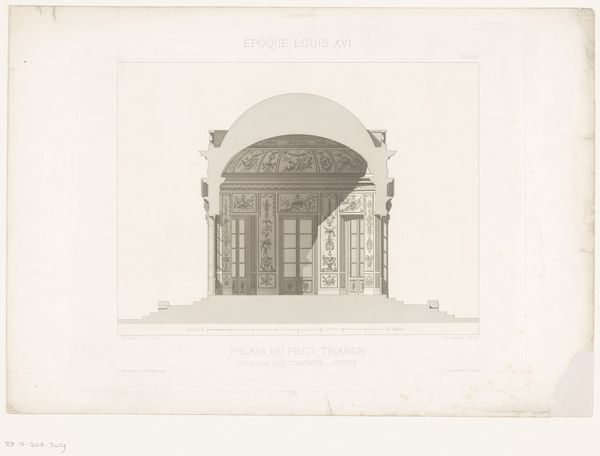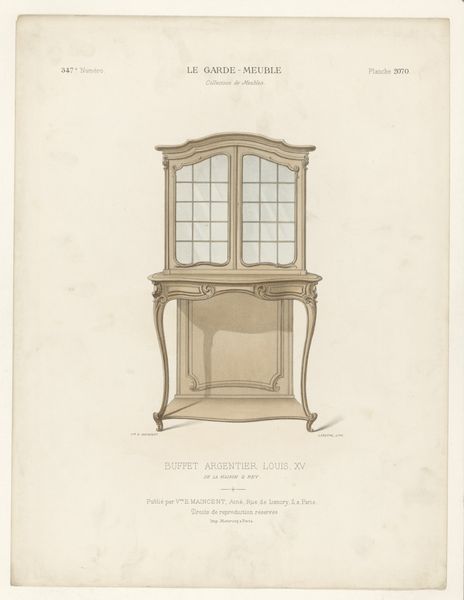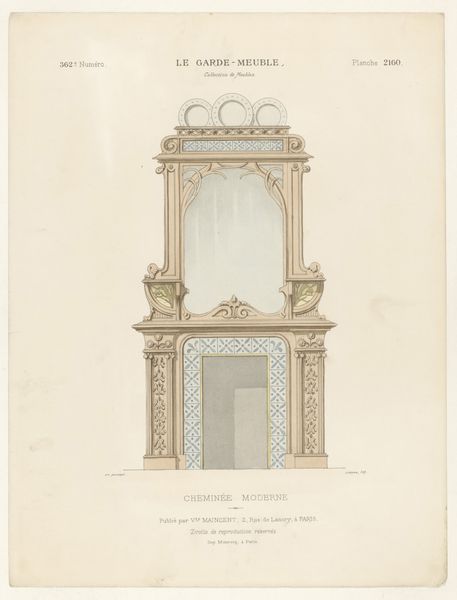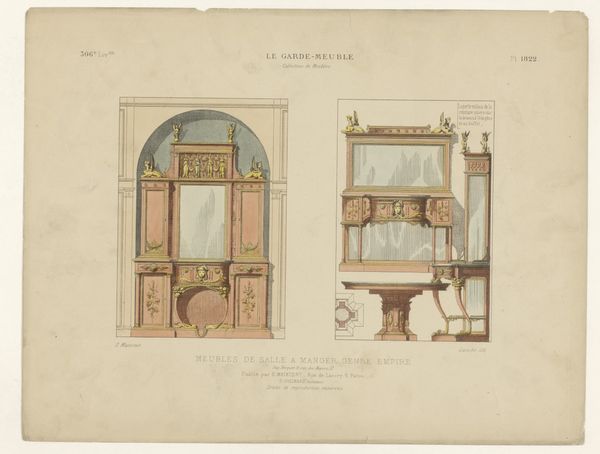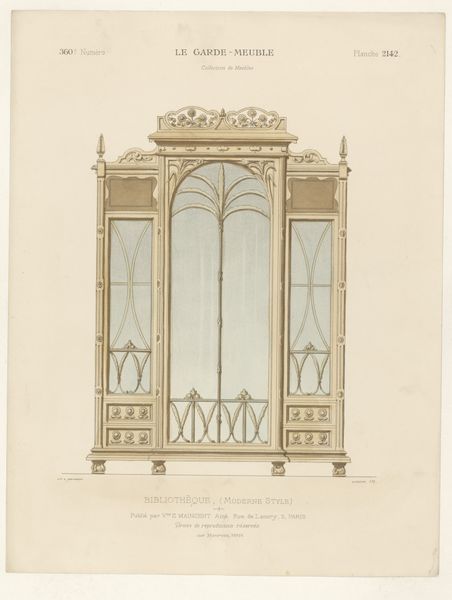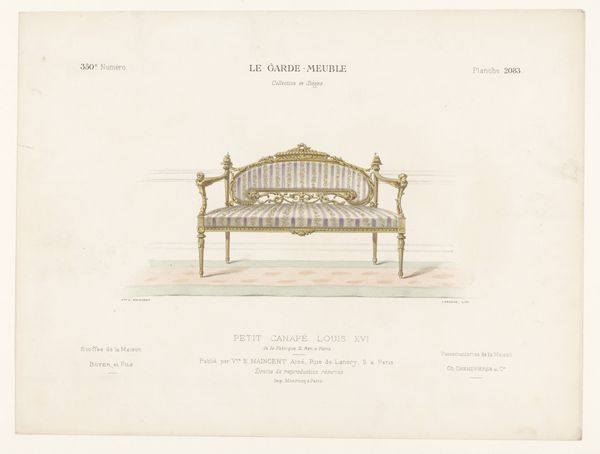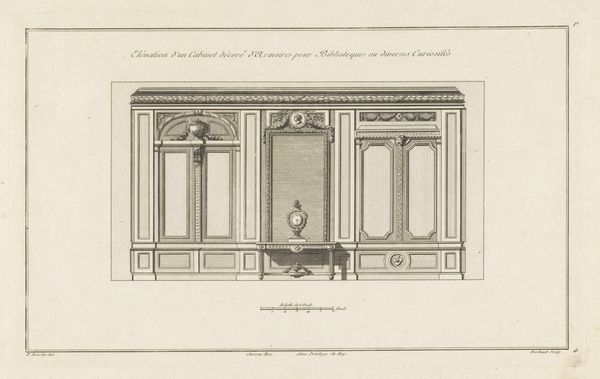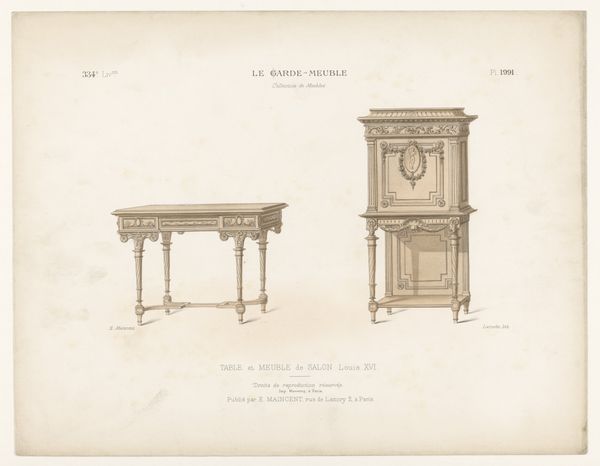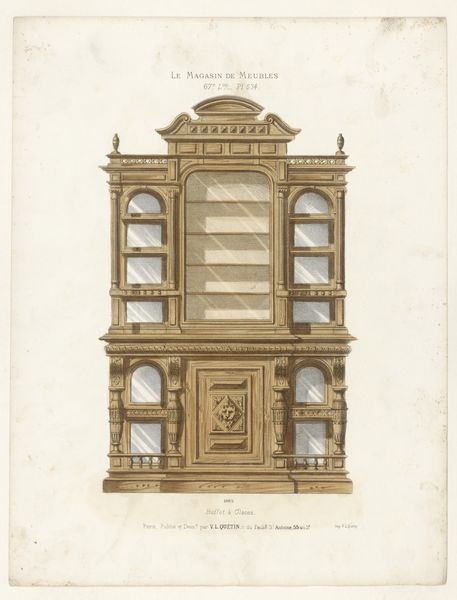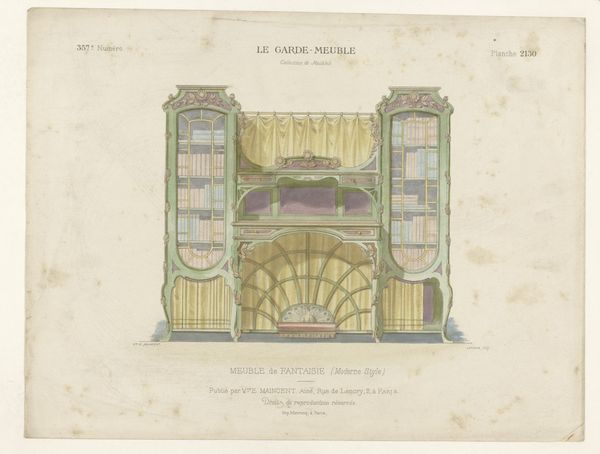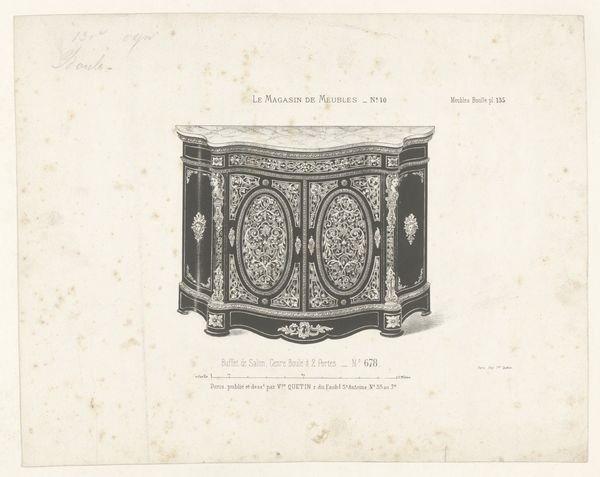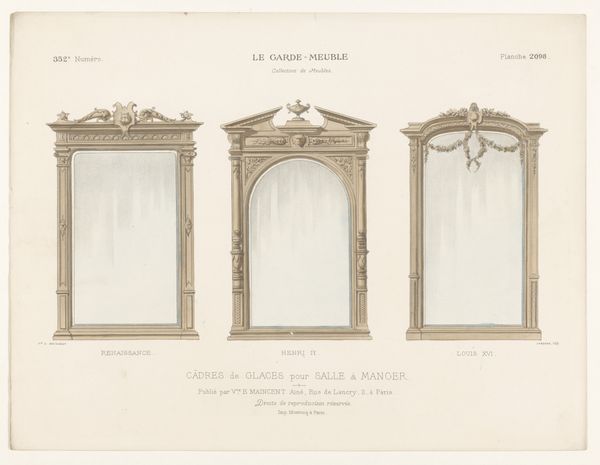
drawing, print, pencil, engraving, architecture
#
drawing
# print
#
form
#
pencil
#
line
#
decorative-art
#
engraving
#
architecture
Dimensions: height 272 mm, width 359 mm
Copyright: Rijks Museum: Open Domain
Curator: Let’s turn our attention to this detailed print entitled "Buffetkast", a piece created sometime between 1895 and 1935. It is believed to be the work of Léon Laroche. We are viewing a detailed depiction of a buffet, rendered with a focus on form and precise linework. Editor: The delicacy of the line is striking. It almost looks like an architectural rendering, and a somewhat wistful ghost of a bygone era! I can almost smell the lemon polish. Curator: Yes, the architectural influence is significant here. We should note the description beneath the artwork identifies this piece as "Buffet de Salle a Manger / Genre Anglais"—Buffet for a dining room in the English style. It gives insight into the international exchange of styles and tastes during the period. How decorative arts were being adopted and adapted. Editor: That “English style” is so telling! I love the sort of quiet confidence, that gentle claim to status through design. But tell me, what do you make of its societal context at that time? It appears mass produced but yet detailed, is it a sign of a shift? Curator: Absolutely. By the late 19th and early 20th centuries, designs like these would have resonated within complex narratives about class, identity, and the ideal of the modern home. The design balances functionality and decoration, appealing to desires for both practicality and refinement, and further blurring the boundaries between art and functionality. Editor: There’s something haunting about it too. A longing perhaps to what's next while cherishing the past. It is in a strange juxtaposition. Curator: Precisely, reflecting perhaps the tensions and aspirations of its time, this 'Buffetkast', rendered through Laroche's hand, acts as a material witness to complex dialogues regarding identity, aesthetics, and socio-economic mobility at that period. Editor: It seems like an invitation to not just observe the drawing, but consider its life— and our relationship with design through time. Curator: Indeed. I think it urges us to think more deeply about design as a dynamic reflection of who we were, and who we wish to become.
Comments
No comments
Be the first to comment and join the conversation on the ultimate creative platform.
